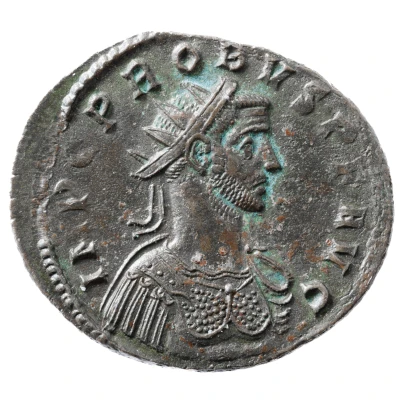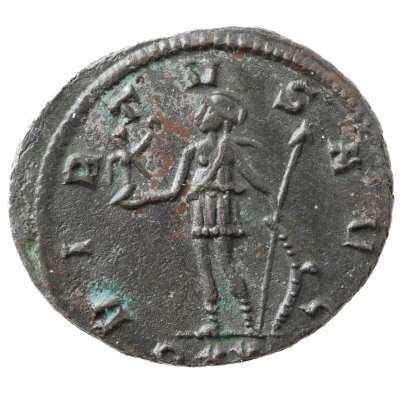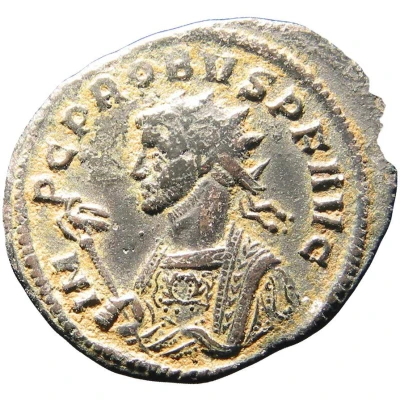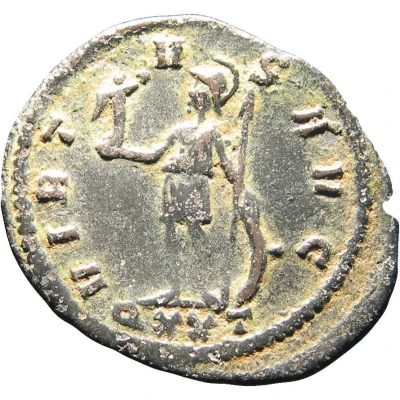


Antoninianus - Probus Cuirassed, right; VIRTVS AVG; Victory
278 year| Silver | 4.00 g | 24.29 mm |
| Issuer | Rome › Roman Empire (27 BC - 395 AD) |
|---|---|
| Emperor | Probus (Marcus Aurelius Probus) (276-282) |
| Type | Standard circulation coin |
| Year | 278 |
| Value | Antoninianus (1) |
| Currency | Antoninianus, Reform of Caracalla (AD 215 – 301) |
| Composition | Silver |
| Weight | 4.00 g |
| Diameter | 24.29 mm |
| Shape | Round (irregular) |
| Technique | Hammered |
| Orientation | Variable alignment ↺ |
| Demonetized | Yes |
| Updated | 2024-10-05 |
| Numista | N#293550 |
|---|---|
| Rarity index | 97% |
Reverse
Soldier, helmeted, in military attire, standing left, holding Victory in right hand and spear in left hand; to right, shield.
Officina and mintmark in exergue.
Script: Latin
Lettering: VIRTVS AVG
Unabridged legend: Virtus Augusti.
Translation: Courage of the emperor.
Comment
RIC 436 lists four variations, being four bust types (bust type according to Pierre Bastiens grouping of bust types; see illustrated: probvs.net):
- radiate, draped, right (A bust; Numista #292784);
- radiate, cuirassed, right (B bust; this coin);
- radiate, wearing imperial mantle, left, holding sceptre surmounted by eagle in right hand (H2 bust; Numista #293551);
- radiate, cuirassed, left (B1 bust; Numista #293552).
RIC 436 was minted by the 4th officina (exergue mark QXXI) of Ticinum. According to Pink, the 4th officina used the reverse title VIRTVS AVG, combined with obverse legend Nr. 5 (IMP C PROBVS P F AVG), during the 4th emission, which was in the year 278. See Karl Pink, Der Aufbau der römischen Münzprägung in der Kaiserzeit VI/I, Wien, 1949.
See Probuscoins for other examples:
- #2111, B bust;
- #2112, B bust;
- #2898, B bust;
- #4349, B bust;
- #4732, B bust;
- #2113, H2 bust;
- #3500, B1 bust.
And Probvs.net for examples.
Interesting fact
The Antoninianus coin, which was issued during the reign of Probus (276-282 AD), was the first Roman coin to feature a portrait of the emperor wearing a cuirass, which was a type of armor made of leather or metal. This departure from the traditional depiction of emperors in robes signaled a shift in the Roman Empire's military focus and propaganda efforts, emphasizing the emperor's role as a military leader and protector of the empire.

